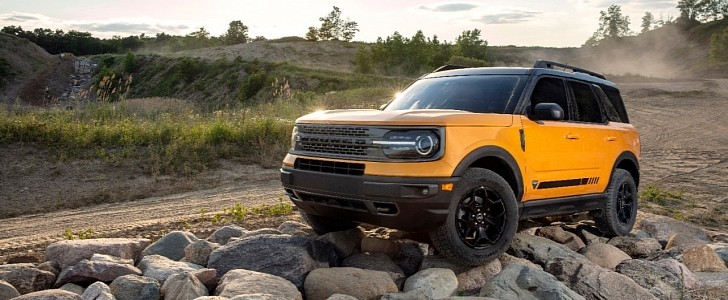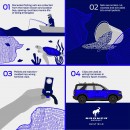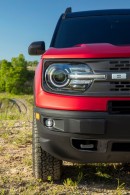"Sustainability" has become a buzzword in the automotive industry, igniting with it a revolution that manifested through the EV wave and adopting cleaner manufacturing processes. As part of its global carbon reduction strategy, Ford is one of the automakers that commit to using sustainable materials in its vehicles.
According to Pew Charitable Trusts, a global nongovernmental organization, the ocean is gulping around 13 million metric tons of plastic each year. A substantial percentage of it is linked to the fishing industry, which uses plastic fishing nets extensively. That is because the nets are a low-cost, lightweight material.
However, when left discarded, lost, or abandoned, these nets become what is known as ghost gear, one of the most destructive types of marine plastic waste that plays a huge role in damaging ecosystems.
Recently, Ford announced that the Bronco Sport models are using wiring harness clips made of this ghost gear. Everything starts with the discarded nylon fishing nets found in the Indian Ocean and the Arabian Sea. The plastic from them is properly cleaned and dried before getting turned into the desired clips.
The material is as durable and lasting as petroleum-based clips, even after being exposed to seawater and harmful UV radiation. Not only that, but it's also a low-cost alternative that requires less energy to manufacture.
Once produced, the clips are then used inside the vehicle to guide wires that power side-curtain airbags. They weigh about five grams (0.17 oz), and the passengers cannot actually see them.
Ford is planning to use recycled ocean plastics on other stationary parts with strength and durability demands that the material can meet or exceed, such as transmission brackets, wire shields, and floor side rails.
It's a small step, but it plays an important role in the company's sustainability strategy. Ford has been producing car parts from recycled plastics that have not been collected from the oceans for more than two decades. Recently, the carmaker has used recycled water bottles to produce underbody shields for the 2020 Ford Escape that are more lightweight, aerodynamic, and are capable of reducing noise levels.
However, when left discarded, lost, or abandoned, these nets become what is known as ghost gear, one of the most destructive types of marine plastic waste that plays a huge role in damaging ecosystems.
Recently, Ford announced that the Bronco Sport models are using wiring harness clips made of this ghost gear. Everything starts with the discarded nylon fishing nets found in the Indian Ocean and the Arabian Sea. The plastic from them is properly cleaned and dried before getting turned into the desired clips.
The material is as durable and lasting as petroleum-based clips, even after being exposed to seawater and harmful UV radiation. Not only that, but it's also a low-cost alternative that requires less energy to manufacture.
Once produced, the clips are then used inside the vehicle to guide wires that power side-curtain airbags. They weigh about five grams (0.17 oz), and the passengers cannot actually see them.
Ford is planning to use recycled ocean plastics on other stationary parts with strength and durability demands that the material can meet or exceed, such as transmission brackets, wire shields, and floor side rails.
It's a small step, but it plays an important role in the company's sustainability strategy. Ford has been producing car parts from recycled plastics that have not been collected from the oceans for more than two decades. Recently, the carmaker has used recycled water bottles to produce underbody shields for the 2020 Ford Escape that are more lightweight, aerodynamic, and are capable of reducing noise levels.





















































